ProductsOct 24 2018
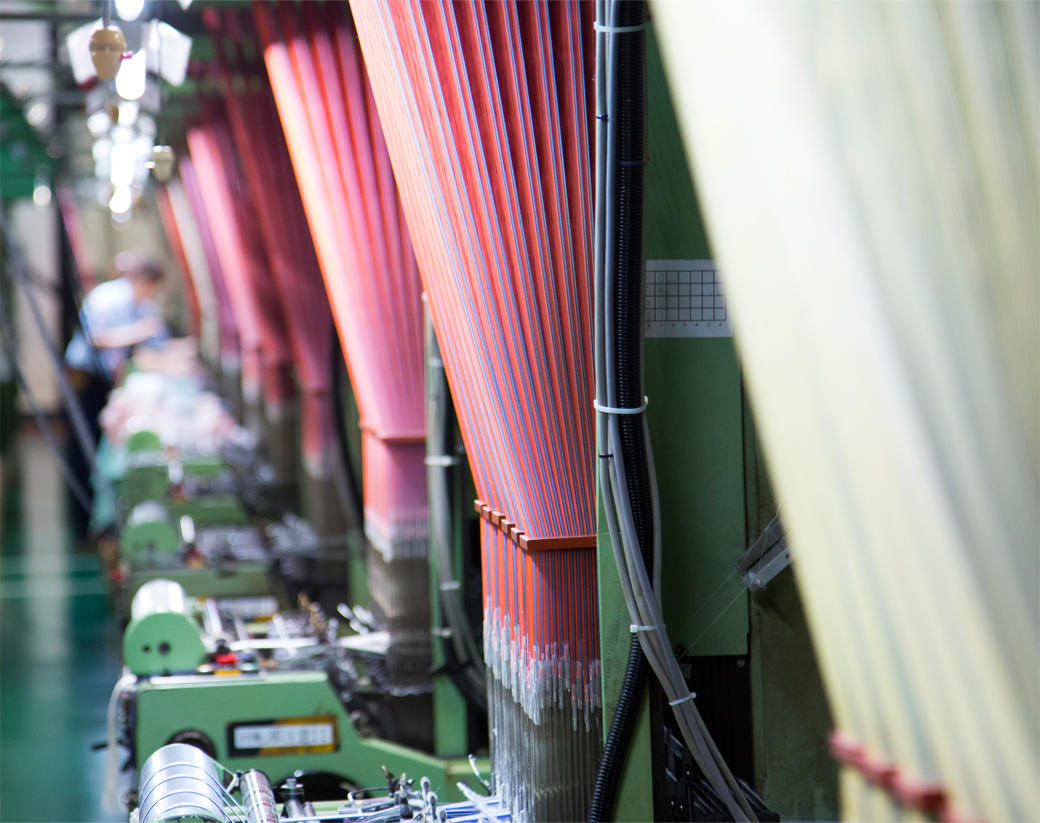
Numerous people are involved in the processes for creating a ribbon, beginning with fine threads. Each ribbon starts as fine threads, and it is processed with machines and professional skills during each process, and is then passed to the next process until it is complete: from one artisan's hand to another. Just like a relay baton that is passed as athletes aim for the finish line, they aim for the goal of completing ribbons with commitment. In this section, we will introduce the flow of creating ribbons while detailing the manufacturing processes in our factory.
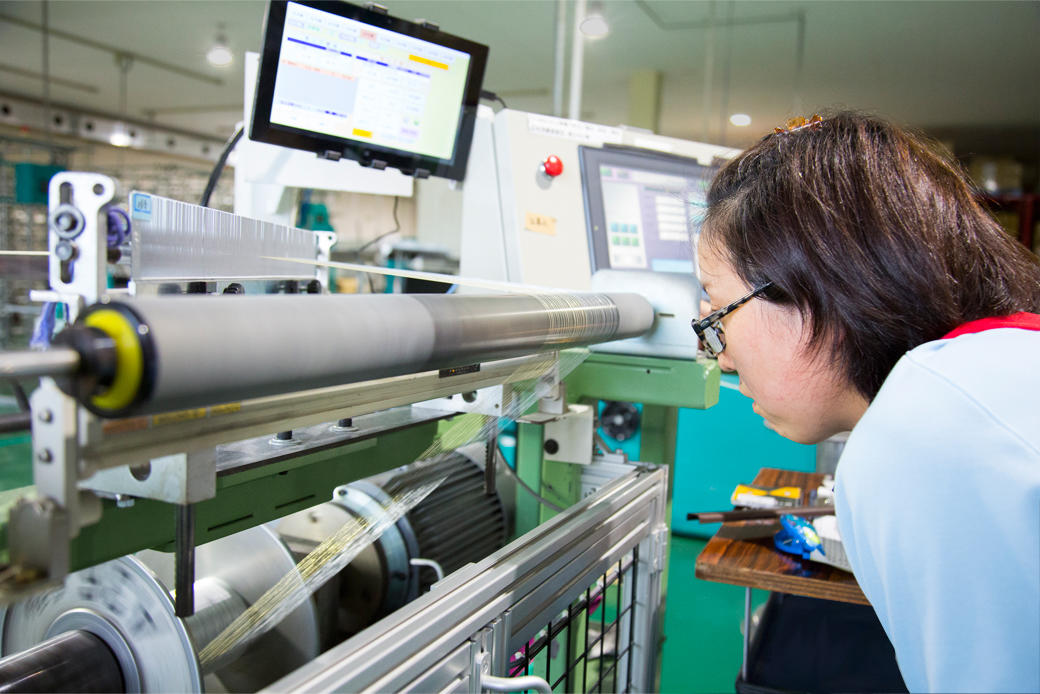
The required number of warps varies depending on the width of the ribbon. So, we carefully check the type of thread, the number of threads, and the color in the specifications. While there is a difference depending on the thickness of the thread, if you are creating a ribbon that is 2 cm wide, wind warps about 20 cm wide around the beam. The aim of this process is to wind the threads while maintaining moderate tension. They will be wound at the same speed at which they are drawn in.
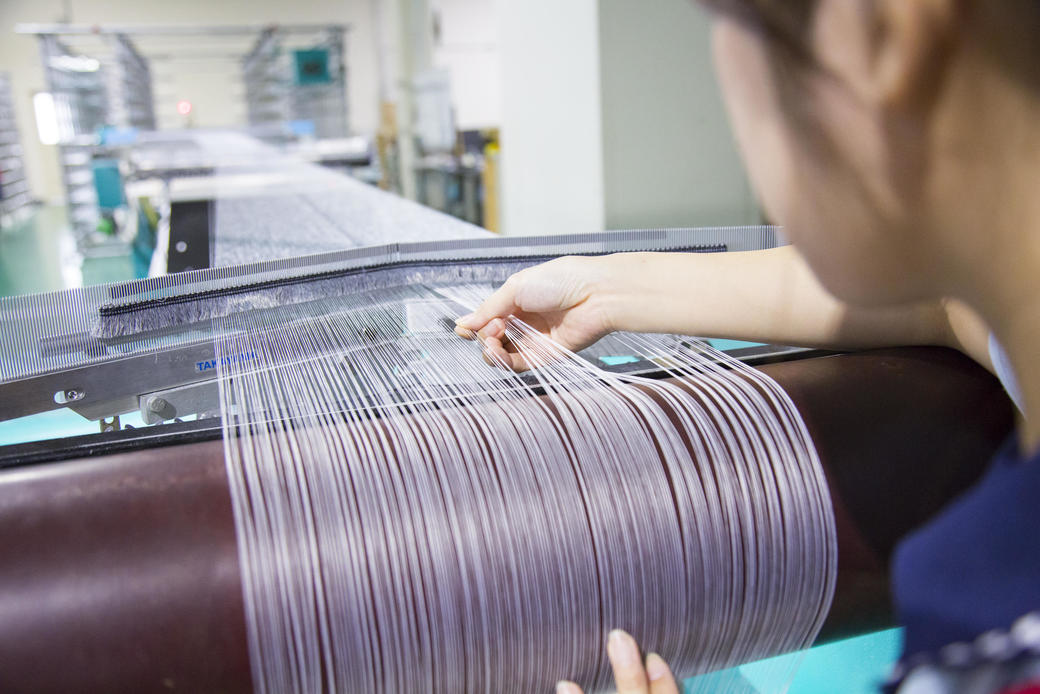
If the tension is too low at this stage, the surface of the wound threads will float and generate slight unevenness, resulting in lines when the ribbon is made. Conversely, if the tension is too high, the threads will become fluffy or be cut in some cases. As a result, the key point in this process is to pay special attention to setting the tension so as not to cause variations in the tension applied to each thread, and complete the winding process, making sure that the surface of the wound threads is flat. Although the task appears simple at a glance, it takes three years to completely master the skills, and it is the basic process for creating beautiful ribbons.
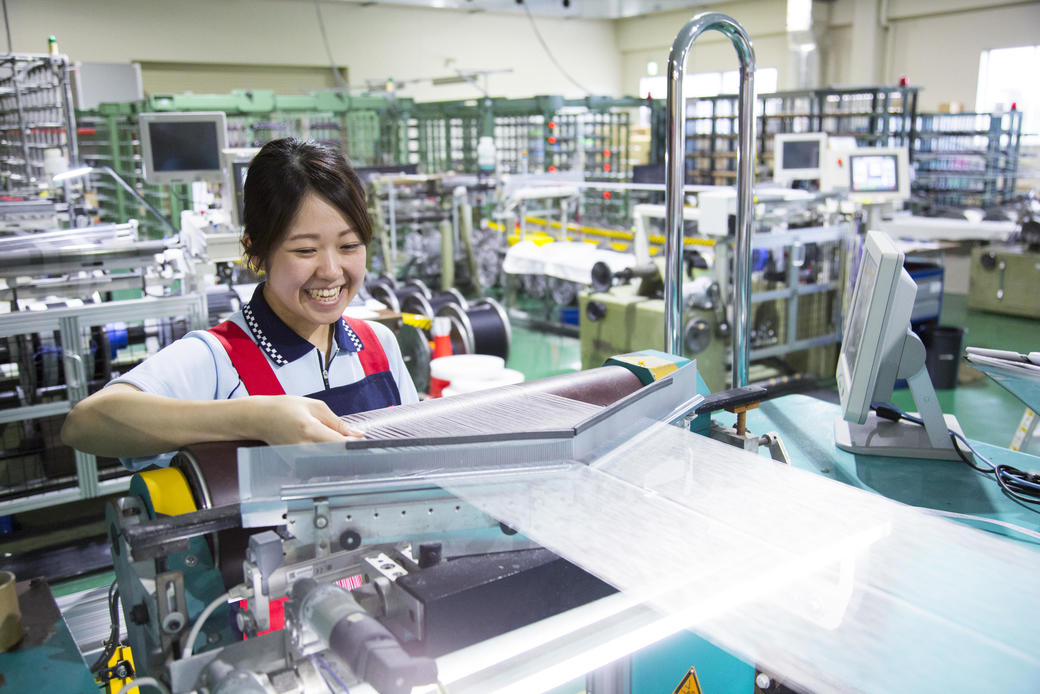
As persons who are involved in the manufacture of SHINDO ribbons, which are trusted by both Japanese and international maison designers, we would like to create ribbons that can be delivered to customers with pride. Sharing this commitment, the people in charge of the process help each other and double-check each other's work to avoid mistakes. It is really great teamwork. At the stage of warping, we are not sure how the finished products will look, and what patterns and textures they will have. We will work on warping today, and will look forward to seeing the finished product.
Next, we will go to the weaving process, in which the warped threads are woven.
Follow a thread arrangement figure that specifies how each warp moves to the ribbon specifications, and set the beam with wound warps in the warping process.
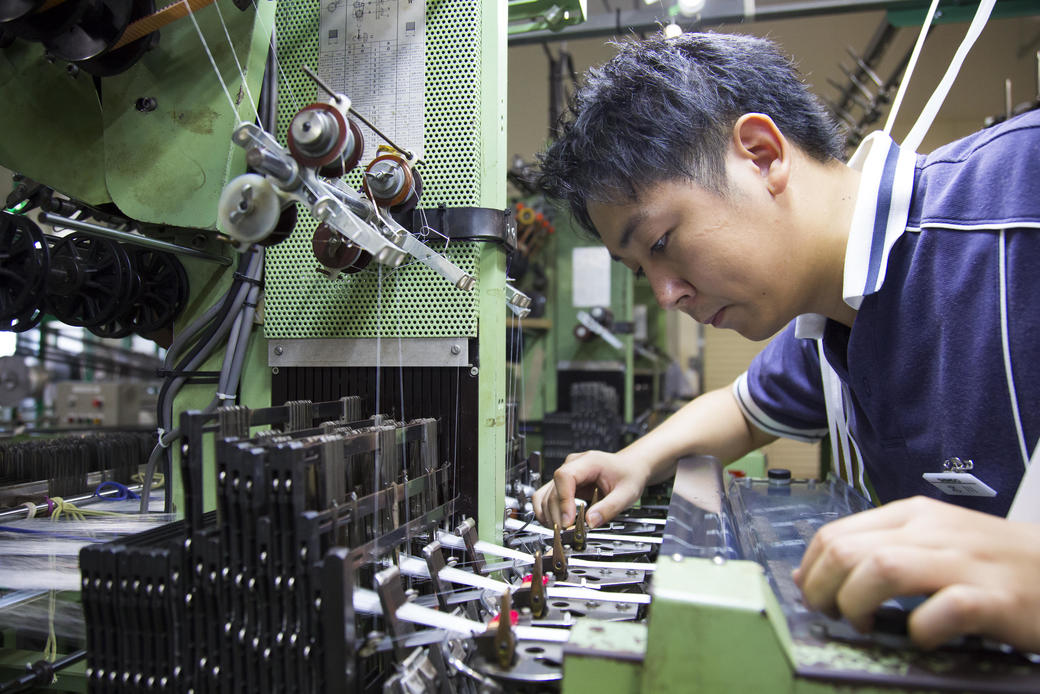
Feed the threads through a part called the held, and put the wefts in between two warps by moving the warps up and down alternately. Then adjust the warp position, and hold the inserted wefts with a part called the osa (reed), which applies pressure to the wefts to increase the density. Repeat this process to form the structure of the ribbon.
A loom is designed to weave multiple ribbons simultaneously, but it has a relatively complicated structure. It is essential to understand the machine structure and its movement, and to possess the skills to adjust the lanes individually. Making the adjustments is not easy. If a thread is not put in at the right time, a loop of the thread will skip and cause the weaving to collapse. If tension applied to the threads is uneven, both edges of the ribbon will crease. There are numerous areas for adjustments. Artisans look at them seriously because they are directly related to the workmanship of ribbons.
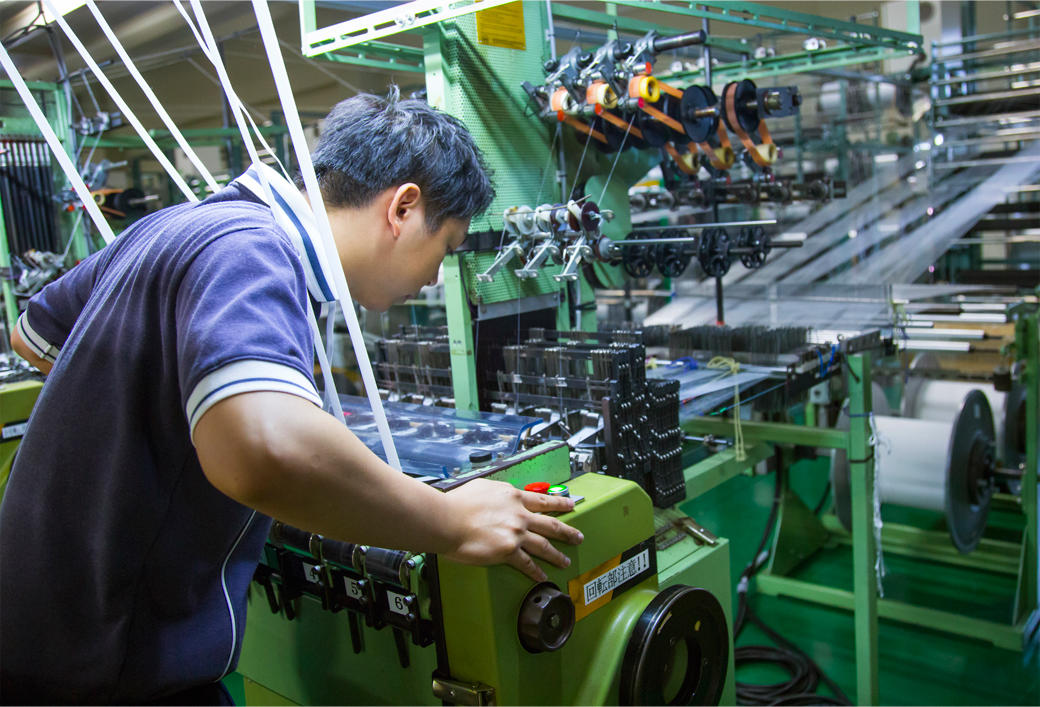
They need the skills and capabilities to be mastered on site to respond to each case. They therefore receive advice from experienced senior artisans in some cases, and they make adjustments with their own eyes and hands by rule of thumb in other cases.
In order to maintain high quality, we at SHINDO write down solutions in the design document for when the same situations develop, and share them with colleagues. Sharing solutions makes it possible to produce high quality products, no matter who carries out the task. One loom artisan said, "I would like to further enhance the value of SHINDO ribbons by using my skills." This craftsmanship and collaboration with colleagues lead to improvements in skills and quality.
Next, we will go to the dyeing process, where the greige is dyed.
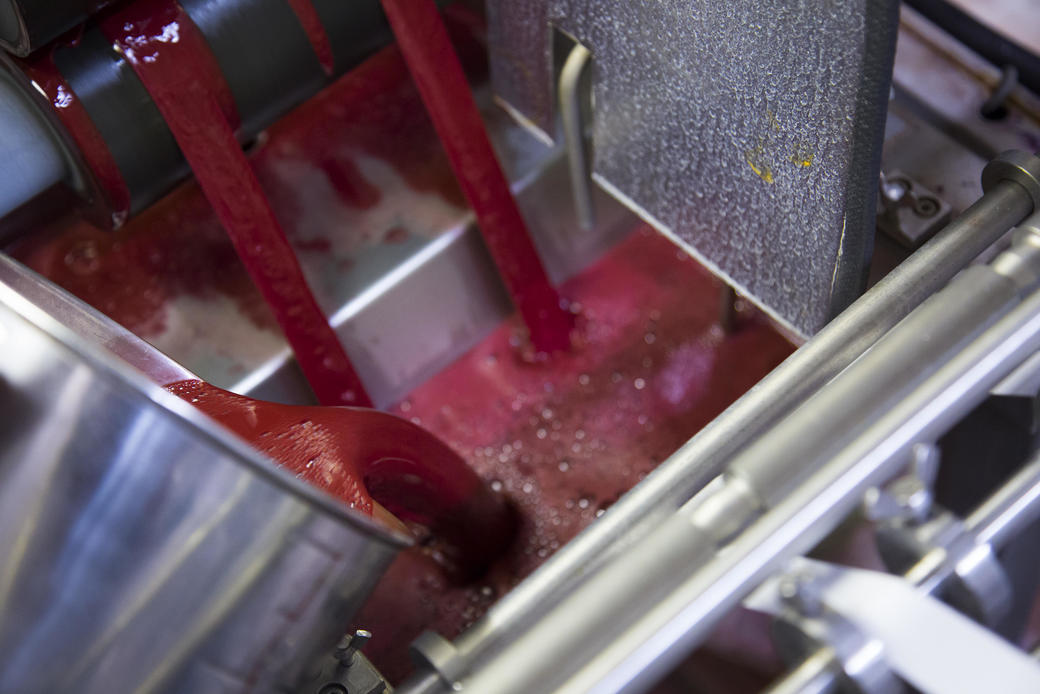
The greatest mission in the dyeing process is to apply the dye evenly and beautifully in the color specified by a customer. In order to produce the same color as that of the master sample requested by the customer, we need to pay attention to not only the amount of chemicals but also the surrounding environment when the dye is blended.
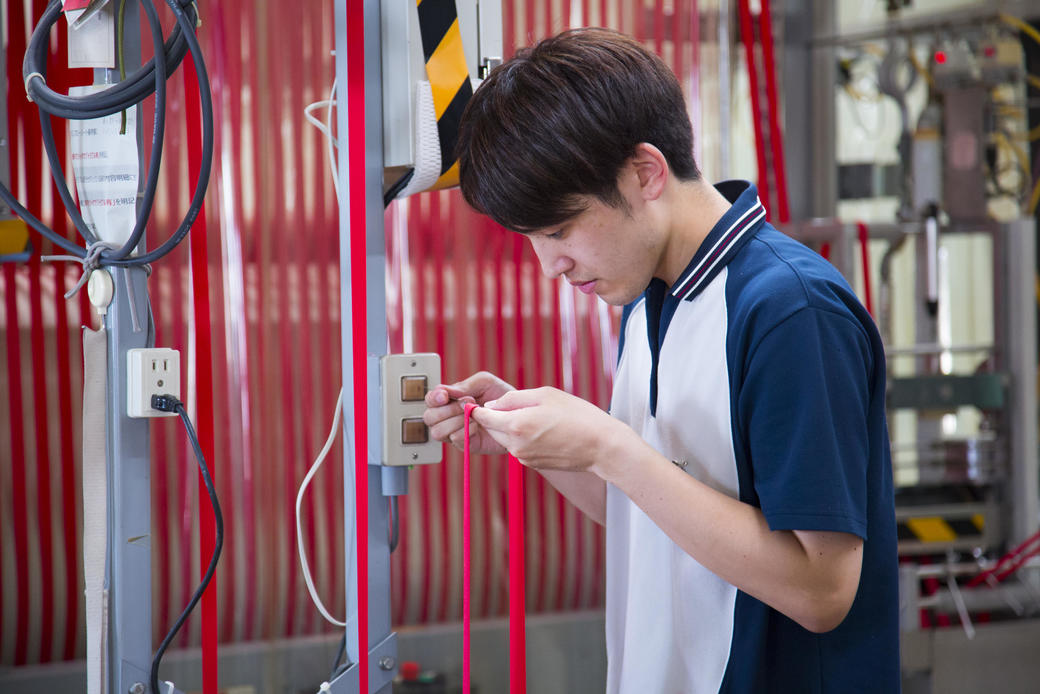
The absolute condition is to be careful that no air blows directly onto it while measuring. Work carefully and meticulously so that small problems caused by slight vibrations will not result in a major defect...
Once the dye liquid is complete, other tasks need to be carried out before the product is dyed. First, use a small beaker to carry out trial dyeing, and check how the color is brought out. This product is designed to be dyed only once. It is therefore a decisive moment to see whether the desired color is produced by this test dyeing. See how a fabric is dyed in the test, and make final adjustments to the dying liquid if necessary. Now start to work on dyeing the actual greige. (When stretch ribbons are made, a further task is carried out to provide them with elasticity while applying tension during this process.)
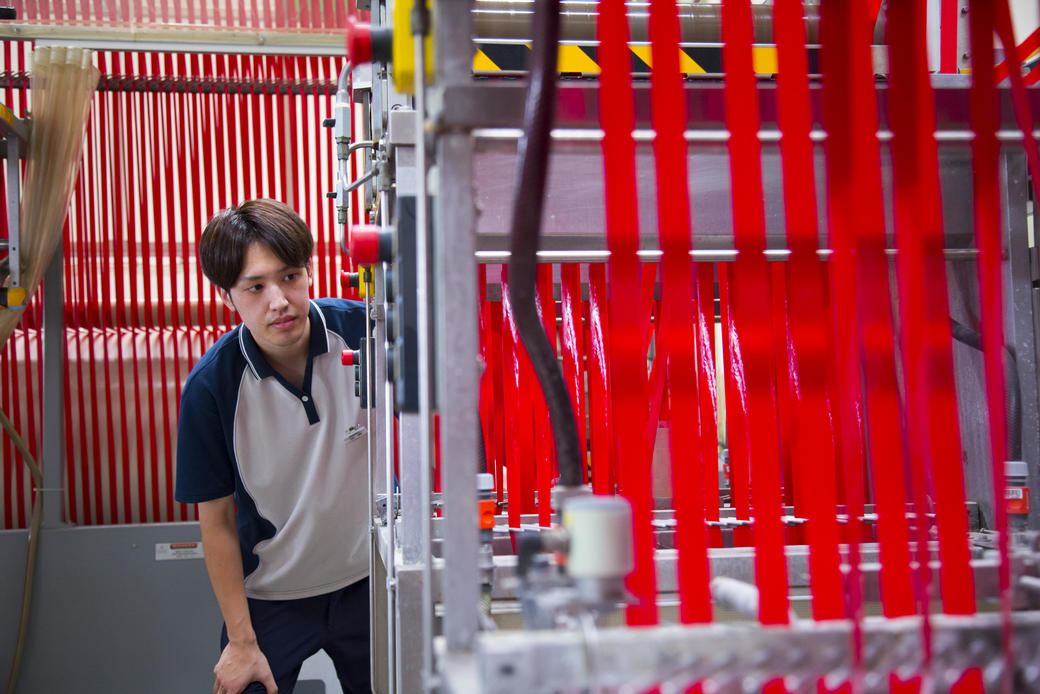
Dyeing is a process in which the color is produced differently depending on the water quality as well. Because our factory is located in an area of abundant nature, there are good water veins, and well water that is suitable for dyeing is used. We are certain that the geographical features of Fukui, which is surrounded by nature with clean air and water, enhance the quality. We recognize that good products are created in the pleasant environment. The artisans therefore pay attention to keeping the space in the workshop tidy and in order. After dyeing, undertake cleaning and drying to fix the color, and the ribbons will be completed.
However, we have not yet reached the goal of creating products of SHINDO quality. Strict eyes will determine whether they pass during the next inspection process.
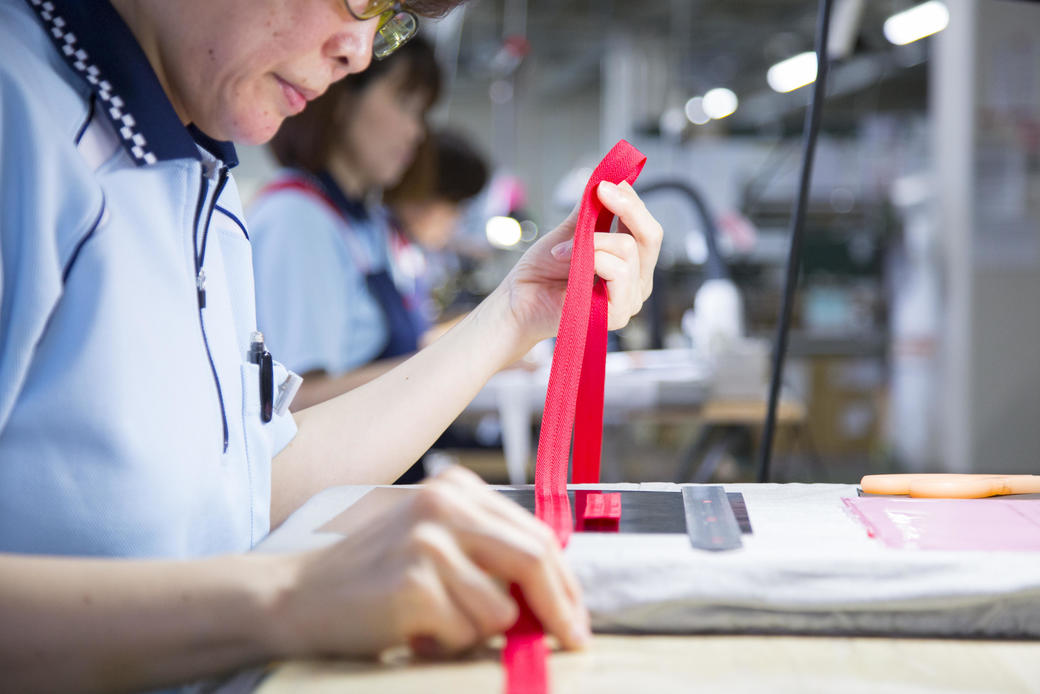
Female inspection specialists with careful eyes who check ribbons meticulously while comparing them with master samples that meet the specifications. They perform careful inspections, focusing on the areas that are difficult to check in the production site or the areas that tend to be rough. The check points vary depending on the product. Accordingly, they try to reset their eyes before starting each inspection, review the product characteristics, and strive to check the products with new eyes.
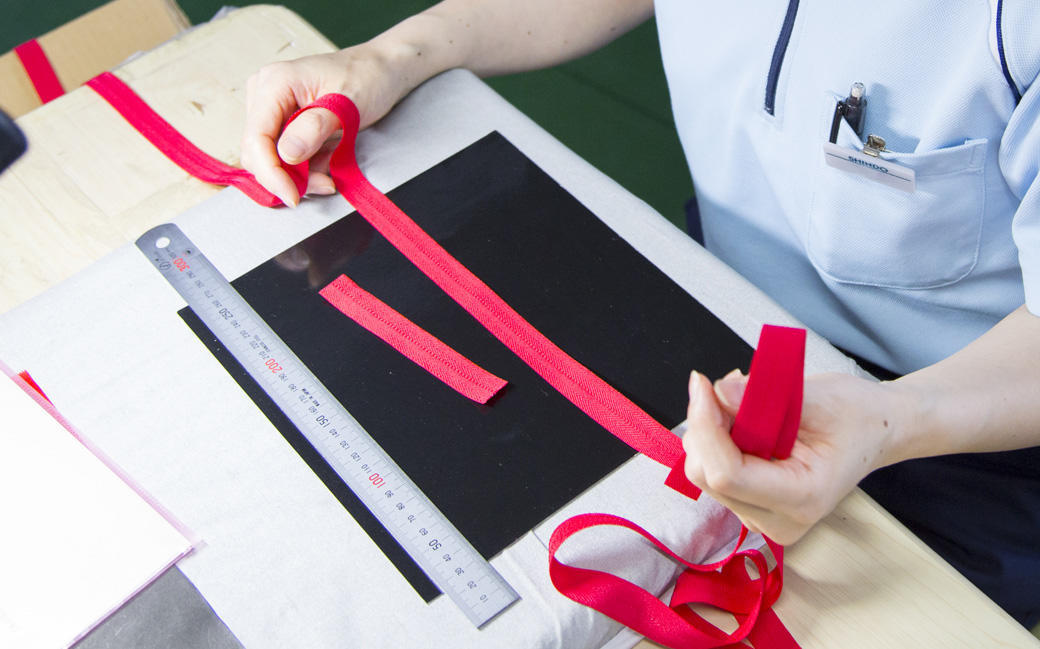
After the ribbons pass the inspection, they are delivered to the customers. As a result, if there are even small areas of concern, we will provide feedback to the production site immediately. This is attributable to the fact that communicating with the production site is leads directly to fewer losses, and the information should be used quickly to improve the quality of the next production run. The integrated production system at our own factory has the major benefit of exchanging opinions with the production site easily, and this leads to improved quality. We share our commitment of wanting to create beautiful ribbons and support the production site from the standpoint of inspection.
We have introduced four processes for creating ribbons with a variety of uses. Ribbons, fine or short, are created similarly in multiple processes by numerous people. We aim for ribbons incorporating SHINDO's devotion to be delivered to as many customers as possible. We work on the ribbons one by one today, keeping this devotion in our hearts.
TOPCategory ArchiveProductsMade in Japan The Processes for Creating SHINDO Ribbons